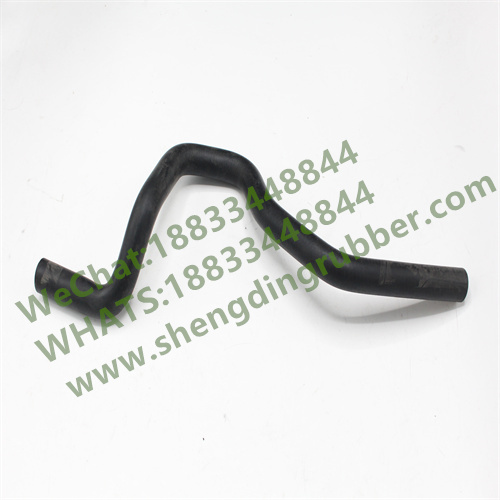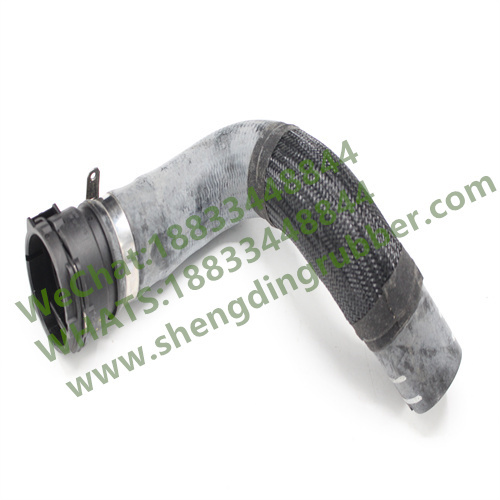Empower Your Engine: Upgrading Land Rover Jaguar Hose for Peak Performance
Release Time:
Apr 19,2025
Empower Your Engine: Upgrading Land Rover Jaguar Hose for Peak Performance When it comes to enhancing the performance of your Land Rover or Jaguar, upgrading the engine hoses is often overlooked. However, the right hoses can significantly influence the efficiency and longevity of your vehicle's engine. In this comprehensive guide, we will delve into the importance of upgrading your hoses, what t
Empower Your Engine: Upgrading Land Rover Jaguar Hose for Peak Performance
When it comes to enhancing the performance of your Land Rover or Jaguar, upgrading the engine hoses is often overlooked. However, the right hoses can significantly influence the efficiency and longevity of your vehicle's engine. In this comprehensive guide, we will delve into the importance of upgrading your hoses, what to consider when selecting new hoses, and how these upgrades can lead to peak performance.
Table of Contents
- 1. The Importance of Hose Upgrades
- 2. Understanding Different Hose Types
- 3. Benefits of Upgrading Hoses
- 4. When to Upgrade Your Hoses
- 5. Choosing the Right Hoses for Your Land Rover or Jaguar
- 6. Installation Guide for Upgrading Hoses
- 7. Maintaining Your Upgraded Hoses for Longevity
- 8. Conclusion
- 9. FAQs
1. The Importance of Hose Upgrades
The hoses in your Land Rover or Jaguar are critical components that manage fluid transportation throughout the engine. They are responsible for delivering coolant, fuel, and air, which are vital for optimal engine performance. **Upgrading these hoses** can improve the overall operation of your vehicle, making it more reliable and efficient.
Many vehicle owners underestimate the potential problems that worn or outdated hoses can cause, including overheating, leaks, and diminished performance. Therefore, understanding the importance of hose upgrades is the first step toward ensuring your engine operates at its peak.
2. Understanding Different Hose Types
Before embarking on any upgrades, it is crucial to understand the different types of hoses available for your vehicle. The primary types relevant to Land Rover and Jaguar models include:
2.1 Coolant Hoses
These hoses transport the coolant from the engine to the radiator. They play a significant role in temperature regulation. Upgrading to high-temperature resistant hoses can prevent breakdowns due to overheating.
2.2 Fuel Hoses
Fuel hoses are responsible for delivering fuel to the engine. Using high-quality, fuel-resistant materials can prevent leaks and maintain fuel efficiency.
2.3 Vacuum Hoses
Vacuum hoses are essential for proper engine function, as they control various systems including emissions and fuel mixtures. Upgrading to reinforced vacuum hoses can enhance engine responsiveness.
2.4 Turbocharger Hoses
If your Land Rover or Jaguar is equipped with a turbocharger, consider upgrading turbo hoses made from silicone or other high-performance materials to handle increased pressure and heat.
3. Benefits of Upgrading Hoses
Investing in high-quality hoses can yield numerous benefits for your Land Rover or Jaguar, including:
3.1 Enhanced Engine Efficiency
New hoses can significantly improve the flow of fluids, leading to better engine performance and fuel efficiency. Smooth fluid transfer minimizes resistance, allowing your engine to operate more efficiently.
3.2 Improved Durability
Modern hoses are designed using advanced materials that resist wear and tear, heat, and chemicals. This increased durability helps prevent premature failures, reducing maintenance costs over time.
3.3 Increased Performance
With upgraded hoses, your engine can achieve optimal performance levels. This translates to improved power output, acceleration, and overall driving experience.
3.4 Reliability and Safety
Old, cracked, or worn hoses can lead to dangerous leaks or complete engine failure. By upgrading, you enhance the safety and reliability of your vehicle, ensuring peace of mind while driving.
4. When to Upgrade Your Hoses
Recognizing the signs that it’s time to upgrade your hoses is essential for maintaining your vehicle's performance. Here are some indicators:
4.1 Visual Damage
Inspect your hoses regularly for cracks, bulges, or leaks. Any visible damage is a clear sign that replacement is necessary.
4.2 Age of Hoses
If your vehicle is older than five years, consider replacing the hoses, even if they appear to be in good condition. Rubber deteriorates over time, even without visible signs of wear.
4.3 Decreased Performance
If you notice a drop in engine performance, such as rough idling or decreased fuel efficiency, it may be time to evaluate your hoses. A blockage or leak can significantly affect engine output.
4.4 Overheating Issues
Frequent overheating can be a symptom of failing coolant hoses. If your engine is regularly reaching high temperatures, it’s critical to inspect and possibly upgrade your hoses.
5. Choosing the Right Hoses for Your Land Rover or Jaguar
Selecting the right hoses is vital for ensuring peak performance. Here are essential factors to consider:
5.1 Material Quality
Opt for hoses made from premium materials such as silicone or reinforced rubber. These materials provide higher resistance to heat, pressure, and chemicals, making them ideal for performance upgrades.
5.2 Compatibility
Always ensure the hoses you select are compatible with your specific model and engine type. Mismatched hoses can lead to fitting issues and potential damage.
5.3 Brand Reputation
Choose hoses from reputable brands known for quality and performance. Research and read reviews to ensure you are investing in reliable components.
5.4 Performance Ratings
Look for hoses that have high-performance ratings, especially if you plan to use your Land Rover or Jaguar for demanding applications, such as off-roading or racing.
6. Installation Guide for Upgrading Hoses
Upgrading your hoses can be a straightforward process if done correctly. Here’s a step-by-step guide to ensure a successful installation:
6.1 Gather Necessary Tools
Before starting, collect the necessary tools, including a socket set, pliers, a hose cutter, and coolant (if applicable).
6.2 Prepare Your Vehicle
Ensure your vehicle is parked on a flat surface, and the engine is cool. Disconnect the battery to prevent electrical issues during the upgrade.
6.3 Remove Old Hoses
Using pliers, carefully loosen the clamps holding the old hoses in place. Remove the hoses and inspect the fittings for any corrosion or damage.
6.4 Install New Hoses
Position the new hoses in place, ensuring they fit snugly on the connections. Tighten the clamps securely, but avoid over-tightening, which can damage the hoses.
6.5 Reconnect the Battery and Test
Reconnect the battery and start the engine. Allow it to run for a few minutes while checking for leaks. If everything looks good, your upgrade is complete!
7. Maintaining Your Upgraded Hoses for Longevity
Proper maintenance can extend the life of your upgraded hoses. Here are some tips to keep in mind:
7.1 Regular Inspections
Conduct regular visual inspections for any signs of wear or damage. Early detection can prevent major issues.
7.2 Cleanliness
Keep the area around your hoses clean to prevent dirt and debris from causing damage. Regularly wipe down the hoses with a damp cloth.
7.3 Monitor Engine Performance
Pay attention to how your vehicle runs. Any changes in performance can indicate issues with your hoses or other engine components.
7.4 Replace as Needed
Even high-quality hoses will eventually wear out. Be proactive in replacing them before they fail to ensure consistent performance.
8. Conclusion
Upgrading the hoses in your Land Rover or Jaguar is a crucial step toward enhancing overall engine performance. By investing in high-quality materials and following proper installation and maintenance practices, you can unlock the full potential of your vehicle. Regular upgrades not only lead to improved efficiency and durability but also ensure that your driving experience remains enjoyable and safe. Empower your engine today by exploring the best hose options available and take the first step toward superior performance.
9. FAQs
9.1 How do I know if my hoses need to be replaced?
Look for visible signs of wear, such as cracks or leaks, and monitor your vehicle's performance. If you notice overheating or decreased efficiency, it's time for an upgrade.
9.2 What materials are best for performance hoses?
Silicone and reinforced rubber are excellent choices for performance hoses due to their high resistance to heat, pressure, and chemicals.
9.3 Can I install new hoses myself?
Yes! With the right tools and guidance, you can successfully upgrade your hoses. Just ensure you follow a thorough installation process.
9.4 How often should I replace my engine hoses?
It's recommended to inspect and potentially replace your hoses every five years or sooner if you notice signs of wear.
9.5 Will upgrading my hoses improve fuel efficiency?
Yes, upgraded hoses can enhance fluid flow and engine efficiency, leading to better fuel economy.
9.6 What brands are most recommended for Land Rover and Jaguar hoses?
While various brands offer quality hoses, some of the most recommended include Gates, OEM, and Goodyear for their reliability and performance ratings.
Key words:
What Else Might You Learn?







